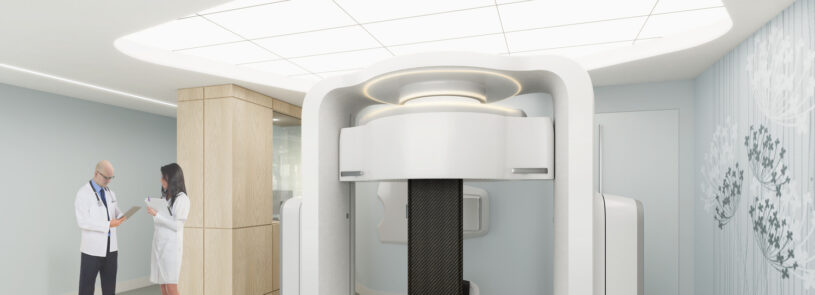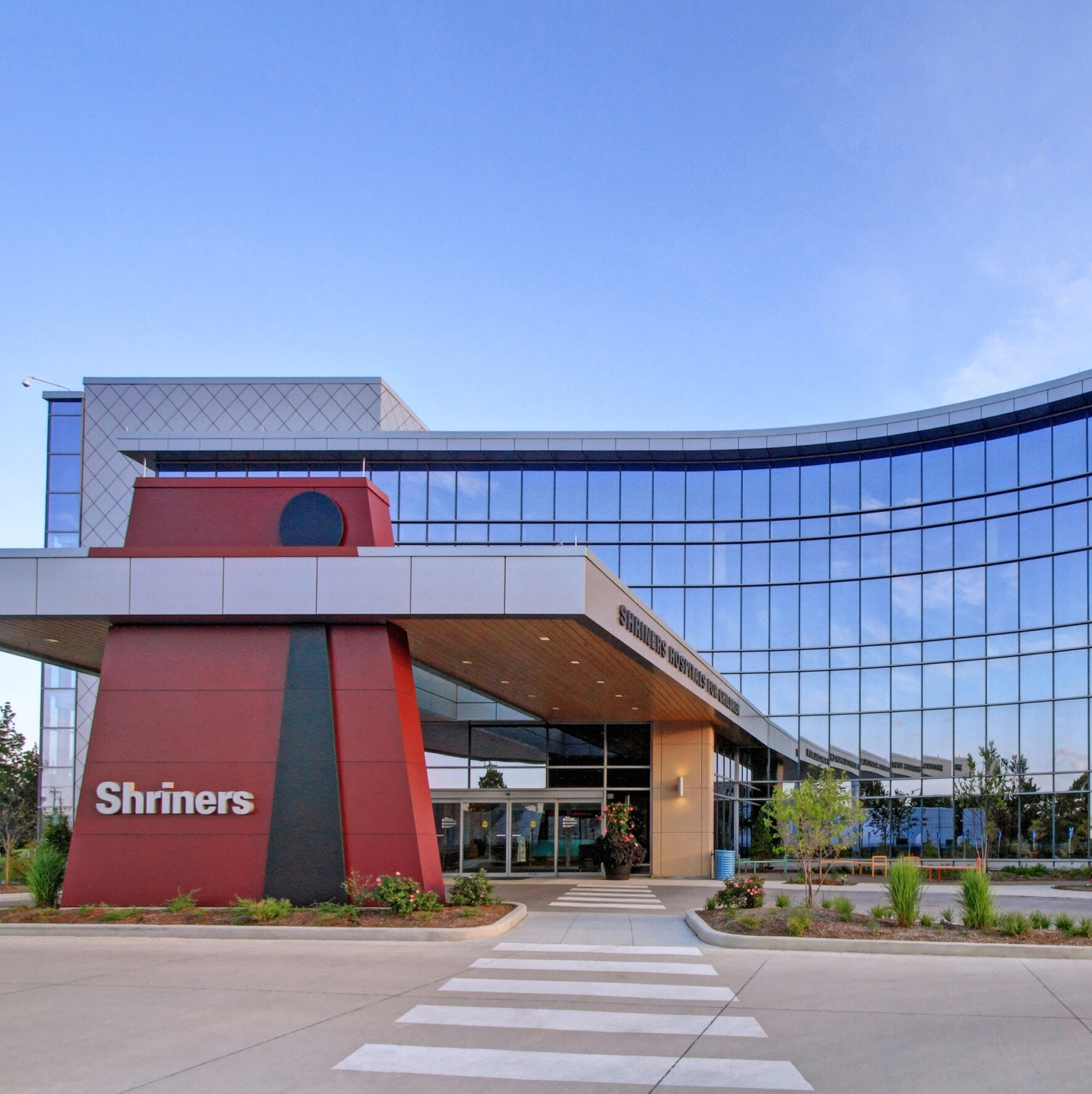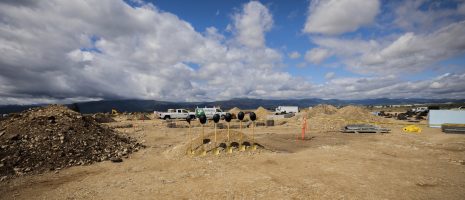Complex and revolutionary proton therapy centers bring unique design considerations

| Precision treatment
The precision of proton therapy cancer treatment is particularly important for tumors near critical organs, such as the brain, spinal cord, or lungs; and for treating pediatric cancers, when reducing radiation exposure to healthy tissues is paramount because young bodies are sensitive to radiation. The treatment is non-invasive, has reduced side effects compared to chemotherapy, and can be used alongside therapies like surgery or chemotherapy. |
By Kevin Langan and John McGonegle
Proton therapy is an advanced form of radiation therapy increasingly being utilized in cancer treatment centers. Unlike conventional radiation therapy, which uses X-rays, proton therapy uses a beam of protons to more precisely target cancerous tumors, minimizing damage to surrounding healthy tissue.
Despite the benefits of proton therapy, due to the complexity, cost, and other factors associated with constructing and operating such centers, fewer than 50 exist in the U.S. The number is gradually increasing, however, including the UW Health Eastpark Medical Center in Madison, WI. IMEG provided mechanical, electrical, plumbing, fire protection, and low voltage engineering design for the new facility. The proton therapy component of the facility will be operational in 2026. When it opens, it will be one of the first proton therapy centers in the world to offer upright proton therapy. This system, which utilizes a fixed proton beam while rotating the patient in an upright position, provides greater patient comfort, reduced patient anxiety, and clinical benefits for certain cancers.
Not surprisingly, the complexity and requirements of proton therapy centers present many unique design challenges including specialized infrastructure, advanced systems, and detailed planning to ensure safety, reliability, and efficiency. Based on our experience at Eastpark Medical Center and other proton therapy projects, we suggest that any healthcare system beginning to investigate or plan such a facility be aware of the following considerations.
Space requirements: Proton therapy centers require substantial space to accommodate the accelerator, gantries, treatment rooms, specialized shielding, support spaces, and associated mechanical and electrical equipment. These facilities need to be built with strong structural considerations to withstand the weight and vibrations of the proton accelerators and concrete shielding.
Radiation shielding: Radiation shielding is a critical component of proton therapy design. Specialized walls, ceilings, and floors – often several feet thick – must be designed to absorb and contain radiation and strategically placed to prevent radiation leakage. The challenge is to balance effective shielding with the need for open, accessible spaces in the facility.
At the Eastpark Medical Center, IMEG worked closely with the radiation consultant to execute a confinement strategy. That included routing ductwork and piping through the maze-like corridors used to access treatment and accelerator rooms, and penetrations were installed at 45-degree angles through the 7-foot-thick concrete walls. Ductwork and piping were not routed over critical equipment and limited utilities were routed below the gantry’s removable roof system.
HVAC and cooling systems: Proton therapy systems, particularly the accelerators and beam transport magnet power supplies, generate a significant amount of heat. The mechanical systems must be designed to handle the high cooling loads associated with proton therapy equipment. This includes specialized HVAC systems capable of managing both the cooling needs of the proton therapy equipment and the airflows required to maintain proper pressure differentials and ensure radiation safety.
At the Eastpark Medical Center, IMEG designed large capacity process water cooling and air conditioning systems to manage the extreme heat gain from the proton therapy equipment.
Large exhaust systems were provided for the gantry, accelerator, and treatment rooms to remove potential radiation particles. These systems also supported the high supply airflows needed to manage the heat generated by the equipment. Supply and exhaust airflow rates in these rooms are monitored for pressurization control and to enable reduced airflow and energy consumption during off-hours. Additionally, a dedicated air handling unit, incorporating redundant components, serves the space containing the high heat-load power supplies and control cabinets. Centralized gas-fired humidifiers maintain the required humidity levels throughout all proton therapy spaces during winter months.
Two process water cooling loops were needed, one for the particle accelerator and the other for the magnets, power supplies, and associated equipment. Each process water loop has redundant cooling sources – the main building chilled water system and domestic water for backup. Due to electromagnetic interference concerns, the process water loops require high water purity, which prevented the use of standard piping components and chemical treatment. All piping components are constructed of corrosion resistant materials and deionized water processors maintain water purity, which is continually monitored.
Electrical systems: Proton therapy equipment requires stable, high-capacity electrical systems, including dedicated power supplies, backup generators, and uninterruptible power supplies (UPS) to ensure that treatment can go ahead without interruption. These systems must be designed to minimize risk from fire or water damage, and carefully integrated with the overall facility’s infrastructure to avoid electromagnetic interference that could disrupt treatment or cause machine malfunctions.
The Eastpark Medical Center required an added electrical service and larger generators. IMEG coordinated with the proton therapy vendors to make sure the electrical system could meet the demands the system would place on it.
Patient handling and gantry systems: The gantry systems and upright patient handling systems in proton therapy are complex, allowing for precise delivery of proton beams from various angles. Careful space planning is required to coordinate the arrangement and routing of building systems with the complex proton therapy equipment. This is especially true for cutting edge systems and equipment that may never have been previously implemented.
Sustainability considerations: It is possible for proton therapy centers to provide innovative cancer care and be environmentally sustainable.
At the Eastpark Medical Center, an energy recovery chiller uses heat generated by the proton therapy equipment to heat the rest of the facility. In addition, a 1MW carport photovoltaic solar array, designed to match the energy use of the proton therapy center, effectively delivers carbon-free cancer care to all the patients who use this facility.
A proton therapy clinic is a large capital investment, both in equipment and infrastructure, and can take over 36 months from vendor selection to being available for patients. Faced with such a task, an engineering consultant who understands the complexities of the project will be essential to the team.
Read the IMEG case study on the UW Health Carbone Cancer Center and listen to a podcast.













